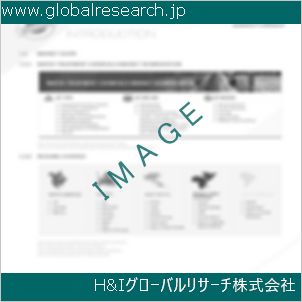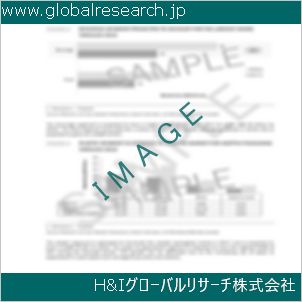1 Inert-gas Generating Systems Market Overview
1.1 Product Definition
1.2 Inert-gas Generating Systems Segment by Type
1.2.1 Global Inert-gas Generating Systems Market Value Growth Rate Analysis by Type 2022 VS 2029
1.2.2 Flue Gas Type
1.2.3 Fuel Oil Type
1.2.4 Others
1.3 Inert-gas Generating Systems Segment by Application
1.3.1 Global Inert-gas Generating Systems Market Value Growth Rate Analysis by Application: 2022 VS 2029
1.3.2 Aviation
1.3.3 Industrial
1.3.4 Marine
1.3.5 Others
1.4 Global Market Growth Prospects
1.4.1 Global Inert-gas Generating Systems Production Value Estimates and Forecasts (2018-2029)
1.4.2 Global Inert-gas Generating Systems Production Capacity Estimates and Forecasts (2018-2029)
1.4.3 Global Inert-gas Generating Systems Production Estimates and Forecasts (2018-2029)
1.4.4 Global Inert-gas Generating Systems Market Average Price Estimates and Forecasts (2018-2029)
1.5 Assumptions and Limitations
2 Market Competition by Manufacturers
2.1 Global Inert-gas Generating Systems Production Market Share by Manufacturers (2018-2023)
2.2 Global Inert-gas Generating Systems Production Value Market Share by Manufacturers (2018-2023)
2.3 Global Key Players of Inert-gas Generating Systems, Industry Ranking, 2021 VS 2022 VS 2023
2.4 Global Inert-gas Generating Systems Market Share by Company Type (Tier 1, Tier 2 and Tier 3)
2.5 Global Inert-gas Generating Systems Average Price by Manufacturers (2018-2023)
2.6 Global Key Manufacturers of Inert-gas Generating Systems, Manufacturing Base Distribution and Headquarters
2.7 Global Key Manufacturers of Inert-gas Generating Systems, Product Offered and Application
2.8 Global Key Manufacturers of Inert-gas Generating Systems, Date of Enter into This Industry
2.9 Inert-gas Generating Systems Market Competitive Situation and Trends
2.9.1 Inert-gas Generating Systems Market Concentration Rate
2.9.2 Global 5 and 10 Largest Inert-gas Generating Systems Players Market Share by Revenue
2.10 Mergers & Acquisitions, Expansion
3 Inert-gas Generating Systems Production by Region
3.1 Global Inert-gas Generating Systems Production Value Estimates and Forecasts by Region: 2018 VS 2022 VS 2029
3.2 Global Inert-gas Generating Systems Production Value by Region (2018-2029)
3.2.1 Global Inert-gas Generating Systems Production Value Market Share by Region (2018-2023)
3.2.2 Global Forecasted Production Value of Inert-gas Generating Systems by Region (2024-2029)
3.3 Global Inert-gas Generating Systems Production Estimates and Forecasts by Region: 2018 VS 2022 VS 2029
3.4 Global Inert-gas Generating Systems Production by Region (2018-2029)
3.4.1 Global Inert-gas Generating Systems Production Market Share by Region (2018-2023)
3.4.2 Global Forecasted Production of Inert-gas Generating Systems by Region (2024-2029)
3.5 Global Inert-gas Generating Systems Market Price Analysis by Region (2018-2023)
3.6 Global Inert-gas Generating Systems Production and Value, Year-over-Year Growth
3.6.1 North America Inert-gas Generating Systems Production Value Estimates and Forecasts (2018-2029)
3.6.2 Europe Inert-gas Generating Systems Production Value Estimates and Forecasts (2018-2029)
3.6.3 China Inert-gas Generating Systems Production Value Estimates and Forecasts (2018-2029)
3.6.4 Japan Inert-gas Generating Systems Production Value Estimates and Forecasts (2018-2029)
4 Inert-gas Generating Systems Consumption by Region
4.1 Global Inert-gas Generating Systems Consumption Estimates and Forecasts by Region: 2018 VS 2022 VS 2029
4.2 Global Inert-gas Generating Systems Consumption by Region (2018-2029)
4.2.1 Global Inert-gas Generating Systems Consumption by Region (2018-2023)
4.2.2 Global Inert-gas Generating Systems Forecasted Consumption by Region (2024-2029)
4.3 North America
4.3.1 North America Inert-gas Generating Systems Consumption Growth Rate by Country: 2018 VS 2022 VS 2029
4.3.2 North America Inert-gas Generating Systems Consumption by Country (2018-2029)
4.3.3 United States
4.3.4 Canada
4.4 Europe
4.4.1 Europe Inert-gas Generating Systems Consumption Growth Rate by Country: 2018 VS 2022 VS 2029
4.4.2 Europe Inert-gas Generating Systems Consumption by Country (2018-2029)
4.4.3 Germany
4.4.4 France
4.4.5 U.K.
4.4.6 Italy
4.4.7 Russia
4.5 Asia Pacific
4.5.1 Asia Pacific Inert-gas Generating Systems Consumption Growth Rate by Region: 2018 VS 2022 VS 2029
4.5.2 Asia Pacific Inert-gas Generating Systems Consumption by Region (2018-2029)
4.5.3 China
4.5.4 Japan
4.5.5 South Korea
4.5.6 China Taiwan
4.5.7 Southeast Asia
4.5.8 India
4.6 Latin America, Middle East & Africa
4.6.1 Latin America, Middle East & Africa Inert-gas Generating Systems Consumption Growth Rate by Country: 2018 VS 2022 VS 2029
4.6.2 Latin America, Middle East & Africa Inert-gas Generating Systems Consumption by Country (2018-2029)
4.6.3 Mexico
4.6.4 Brazil
4.6.5 Turkey
5 Segment by Type
5.1 Global Inert-gas Generating Systems Production by Type (2018-2029)
5.1.1 Global Inert-gas Generating Systems Production by Type (2018-2023)
5.1.2 Global Inert-gas Generating Systems Production by Type (2024-2029)
5.1.3 Global Inert-gas Generating Systems Production Market Share by Type (2018-2029)
5.2 Global Inert-gas Generating Systems Production Value by Type (2018-2029)
5.2.1 Global Inert-gas Generating Systems Production Value by Type (2018-2023)
5.2.2 Global Inert-gas Generating Systems Production Value by Type (2024-2029)
5.2.3 Global Inert-gas Generating Systems Production Value Market Share by Type (2018-2029)
5.3 Global Inert-gas Generating Systems Price by Type (2018-2029)
6 Segment by Application
6.1 Global Inert-gas Generating Systems Production by Application (2018-2029)
6.1.1 Global Inert-gas Generating Systems Production by Application (2018-2023)
6.1.2 Global Inert-gas Generating Systems Production by Application (2024-2029)
6.1.3 Global Inert-gas Generating Systems Production Market Share by Application (2018-2029)
6.2 Global Inert-gas Generating Systems Production Value by Application (2018-2029)
6.2.1 Global Inert-gas Generating Systems Production Value by Application (2018-2023)
6.2.2 Global Inert-gas Generating Systems Production Value by Application (2024-2029)
6.2.3 Global Inert-gas Generating Systems Production Value Market Share by Application (2018-2029)
6.3 Global Inert-gas Generating Systems Price by Application (2018-2029)
7 Key Companies Profiled
7.1 Kashiwa
7.1.1 Kashiwa Inert-gas Generating Systems Corporation Information
7.1.2 Kashiwa Inert-gas Generating Systems Product Portfolio
7.1.3 Kashiwa Inert-gas Generating Systems Production, Value, Price and Gross Margin (2018-2023)
7.1.4 Kashiwa Main Business and Markets Served
7.1.5 Kashiwa Recent Developments/Updates
7.2 Alfa Laval
7.2.1 Alfa Laval Inert-gas Generating Systems Corporation Information
7.2.2 Alfa Laval Inert-gas Generating Systems Product Portfolio
7.2.3 Alfa Laval Inert-gas Generating Systems Production, Value, Price and Gross Margin (2018-2023)
7.2.4 Alfa Laval Main Business and Markets Served
7.2.5 Alfa Laval Recent Developments/Updates
7.3 Wärtsilä
7.3.1 Wärtsilä Inert-gas Generating Systems Corporation Information
7.3.2 Wärtsilä Inert-gas Generating Systems Product Portfolio
7.3.3 Wärtsilä Inert-gas Generating Systems Production, Value, Price and Gross Margin (2018-2023)
7.3.4 Wärtsilä Main Business and Markets Served
7.3.5 Wärtsilä Recent Developments/Updates
7.4 Parker Hannifin
7.4.1 Parker Hannifin Inert-gas Generating Systems Corporation Information
7.4.2 Parker Hannifin Inert-gas Generating Systems Product Portfolio
7.4.3 Parker Hannifin Inert-gas Generating Systems Production, Value, Price and Gross Margin (2018-2023)
7.4.4 Parker Hannifin Main Business and Markets Served
7.4.5 Parker Hannifin Recent Developments/Updates
7.5 Honeywell International
7.5.1 Honeywell International Inert-gas Generating Systems Corporation Information
7.5.2 Honeywell International Inert-gas Generating Systems Product Portfolio
7.5.3 Honeywell International Inert-gas Generating Systems Production, Value, Price and Gross Margin (2018-2023)
7.5.4 Honeywell International Main Business and Markets Served
7.5.5 Honeywell International Recent Developments/Updates
7.6 Eaton
7.6.1 Eaton Inert-gas Generating Systems Corporation Information
7.6.2 Eaton Inert-gas Generating Systems Product Portfolio
7.6.3 Eaton Inert-gas Generating Systems Production, Value, Price and Gross Margin (2018-2023)
7.6.4 Eaton Main Business and Markets Served
7.6.5 Eaton Recent Developments/Updates
7.7 On Site Gas Systems
7.7.1 On Site Gas Systems Inert-gas Generating Systems Corporation Information
7.7.2 On Site Gas Systems Inert-gas Generating Systems Product Portfolio
7.7.3 On Site Gas Systems Inert-gas Generating Systems Production, Value, Price and Gross Margin (2018-2023)
7.7.4 On Site Gas Systems Main Business and Markets Served
7.7.5 On Site Gas Systems Recent Developments/Updates
7.8 Air Liquide
7.8.1 Air Liquide Inert-gas Generating Systems Corporation Information
7.8.2 Air Liquide Inert-gas Generating Systems Product Portfolio
7.8.3 Air Liquide Inert-gas Generating Systems Production, Value, Price and Gross Margin (2018-2023)
7.8.4 Air Liquide Main Business and Markets Served
7.7.5 Air Liquide Recent Developments/Updates
7.9 Novair Industries
7.9.1 Novair Industries Inert-gas Generating Systems Corporation Information
7.9.2 Novair Industries Inert-gas Generating Systems Product Portfolio
7.9.3 Novair Industries Inert-gas Generating Systems Production, Value, Price and Gross Margin (2018-2023)
7.9.4 Novair Industries Main Business and Markets Served
7.9.5 Novair Industries Recent Developments/Updates
7.10 Cobham
7.10.1 Cobham Inert-gas Generating Systems Corporation Information
7.10.2 Cobham Inert-gas Generating Systems Product Portfolio
7.10.3 Cobham Inert-gas Generating Systems Production, Value, Price and Gross Margin (2018-2023)
7.10.4 Cobham Main Business and Markets Served
7.10.5 Cobham Recent Developments/Updates
7.11 Coldharbour Marine
7.11.1 Coldharbour Marine Inert-gas Generating Systems Corporation Information
7.11.2 Coldharbour Marine Inert-gas Generating Systems Product Portfolio
7.11.3 Coldharbour Marine Inert-gas Generating Systems Production, Value, Price and Gross Margin (2018-2023)
7.11.4 Coldharbour Marine Main Business and Markets Served
7.11.5 Coldharbour Marine Recent Developments/Updates
7.12 Survitec
7.12.1 Survitec Inert-gas Generating Systems Corporation Information
7.12.2 Survitec Inert-gas Generating Systems Product Portfolio
7.12.3 Survitec Inert-gas Generating Systems Production, Value, Price and Gross Margin (2018-2023)
7.12.4 Survitec Main Business and Markets Served
7.12.5 Survitec Recent Developments/Updates
8 Industry Chain and Sales Channels Analysis
8.1 Inert-gas Generating Systems Industry Chain Analysis
8.2 Inert-gas Generating Systems Key Raw Materials
8.2.1 Key Raw Materials
8.2.2 Raw Materials Key Suppliers
8.3 Inert-gas Generating Systems Production Mode & Process
8.4 Inert-gas Generating Systems Sales and Marketing
8.4.1 Inert-gas Generating Systems Sales Channels
8.4.2 Inert-gas Generating Systems Distributors
8.5 Inert-gas Generating Systems Customers
9 Inert-gas Generating Systems Market Dynamics
9.1 Inert-gas Generating Systems Industry Trends
9.2 Inert-gas Generating Systems Market Drivers
9.3 Inert-gas Generating Systems Market Challenges
9.4 Inert-gas Generating Systems Market Restraints
10 Research Finding and Conclusion
11 Methodology and Data Source
11.1 Methodology/Research Approach
11.1.1 Research Programs/Design
11.1.2 Market Size Estimation
11.1.3 Market Breakdown and Data Triangulation
11.2 Data Source
11.2.1 Secondary Sources
11.2.2 Primary Sources
11.3 Author List
11.4 Disclaimer
| ※参考情報 不活性ガス生成システム(Inert-gas Generating Systems)は、主に酸素を排除するために用いられる技術で、特に危険物の取り扱いや保管、様々な工業プロセスにおいて重要な役割を果たします。これらのシステムは、不活性ガスを生成し、反応性のある環境を抑制することで、火災や爆発のリスクを低減します。それでは、不活性ガス生成システムの定義、特徴、種類、用途、関連技術について詳しく考察していきます。 不活性ガス生成システムの定義は、特定のプロセスや環境において酸素濃度を低下させ、不活性ガスを発生させる装置のことを指します。不活性ガスとしては、主に窒素(N2)やアルゴン(Ar)、二酸化炭素(CO2)などが用いられます。これらのガスは、ポテンシャルが低いため、化学反応を引き起こしにくく、保護環境を提供するのに適しています。 不活性ガス生成システムの特徴には、主に以下の点が挙げられます。まず第一に、これらのシステムは高い安全性を提供します。酸素濃度を低下させることで、可燃物との反応を防ぎます。第二に、システムは迅速にガスを生成することができ、必要な場面に即座に対応する能力があります。さらに、設備の規模や設計に応じて、柔軟に適応できるため、さまざまな産業に応じた仕様で導入が可能です。 不活性ガス生成システムの種類は、主に生成方法によって分類されます。代表的なものには、化学的な反応を用いたシステム、物理的なプロセスを利用したシステム、そして膜分離技術を用いたシステムがあります。化学的反応による生成システムでは、特定の化学反応を通じて不活性ガスを生成します。例えば、ナトリウムやカルシウムの金属と水分との反応によって生成される水素を利用し、その水素を不活性化するために他のガスと混合する方式が挙げられます。 物理的なプロセスを利用したシステムの一例として、空気から酸素を分離して窒素を生成するプロセスがあります。この方法では、圧縮空気を冷却し、液体化させてから、蒸発する際に残る窒素を取り出すことができます。この手法は、特に大規模な設備において効率的です。一方、膜分離技術では、特定の膜を利用して酸素を選択的に透過させないようにし、窒素を濃縮させる方法が使用されます。 不活性ガス生成システムの用途は多岐にわたります。代表的な用途としては、石油産業におけるタンクの保護、食品業界における食材の保存、化学工業における反応環境の管理などが挙げられます。具体的に、石油産業では、貯蔵タンク内に不活性ガスを導入することにより、酸素と可燃物との接触を防ぎ、爆発や火災の危険性を大幅に減少させます。食品業界では、窒素ガスによって酸素を置き換え、酸化を防ぐことで、長期間の鮮度保持が実現されます。 また、化学工業では、反応環境を整えるために不活性ガスが使用されます。特に熱や圧力の条件下で反応が進行する場合にも、酸素による反応を抑える役割を果たします。このように、不活性ガス生成システムは数え切れないほどの分野で使われ、私たちの生活や産業において不可欠な技術となっているのです。 関連技術としては、安全監視システムや制御技術が重要です。不活性ガス生成システムの運用を最適化するためには、リアルタイムで環境を監視し、必要に応じてガス生成量を調整する技術が求められます。例えば、センサーを用いて酸素濃度をモニタリングし、設定した閾値を超えた場合には自動的に生成システムが起動するような仕組みが考えられます。 さらに、エネルギー効率を向上させるための研究も進行中です。多くの不活性ガス生成システムはエネルギーを消費してガスを生成するため、その効率を改善することがコスト削減や環境負荷の低減につながります。新しい素材や技術の発展により、将来的にはより高効率で持続可能な不活性ガス生成システムが実現することが期待されています。 不活性ガス生成システムは、極めて広範囲にわたるアプリケーションと技術的な進歩が進んでいる分野です。各業界に対するニーズは異なるものの、全体として安全性や効率性を向上させる方向へと進んでいます。今後も技術の進展や新たな応用が期待されており、不活性ガス生成システムはより重要な役割を果たすことになるでしょう。 |
❖ 免責事項 ❖
http://www.globalresearch.jp/disclaimer












